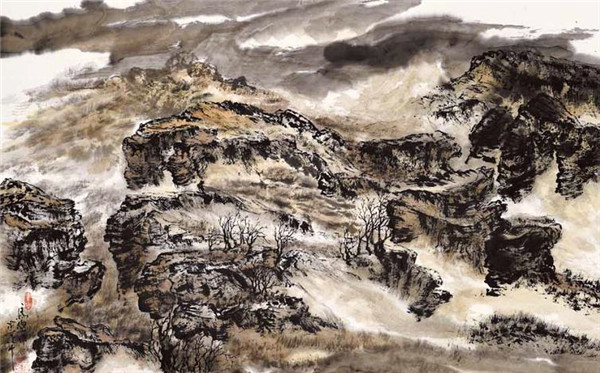 |
|
Early Winter in Taihang [Photo provided to Chinaculture.org] |
This school of Chinese painting turned out to be more symbolic and can even be seen as a Chinese version of expressionism in that painters would use symbols to convey their feelings. A piece of bamboo, a plum or a pine tree may represent the elegance of a gentleman. A distant mountain, perhaps with a scholar walking along a narrow path by a waterfall, is a common motif showing a gentleman immersed in an easy and quiet spiritual world, away from the hustle and bustle of society.
Perhaps because of these widely-respected traditions among Chinese intellectuals, most Chinese paintings carry a sense of world-weariness or pessimism.
However, Ma’s paintings try to bring people into a different world, one in which the mountains tend to be powerful and overwhelming and rivers more friendly and inviting.
Starting from September 13, 2014, one of Ma’s paintings was shown at the week-long "USA in the Eyes of Chinese Artists" exhibition, a contemporary Chinese painting exhibition marking the 35th anniversary of the establishment of China-US Diplomatic relations in Beijing.
The painting depicts the Grand Canyon of USA and Taihang Mountain in Northern China. The Grand Mountains and Rivers in China and the USA portrays majestic mountain peaks and a meandering river. Ma intended to convey that natural wonders, no matter where they are in the world, are unique and should be treasured and preserved.
Ma believes that an artist is obliged to pinpoint the spirit or soul of nature, mountains and rivers. The soul of nature, if depicted successfully, might ignite different responses in viewers.
He loves the strength and might of the mountains he depicts. Ma says he wants his paintings to be realistic, optimistic and encouraging. It is clear that this sophisticated Chinese artist is making his mark on an ancient Chinese art.